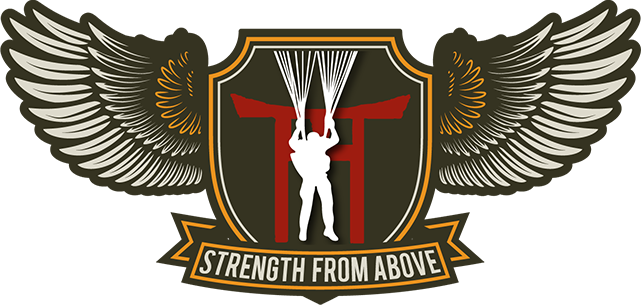Lt. Ringler, John M.

Commanding Officer, B Company, 511th PIR
May 9, 1918 - June 1, 2008 (Age 90) - gravesite
Citations (Including WWII, Korea and Vietnam): Silver Star w/ Oak Leaf Cluster; Bronze Star; Purple Heart; Army Commendation Medal; Presidential Unit Citation w/ 2 Oak Leaf Clusters; Distinguished Unit Badge; British Military Cross; American Defense Service Medal; American Campaign Medal; Asiatic Pacific Campaign Medal; World War II Victory Medal; Army Occupation Medal (Japan); National Defense Service Medal; Armed Forces Expeditionary Medal; United Nations Service Medal; Armed Forces Reserve Medal; Combat Infantryman Badge; Master Parachutist Badge with three Bronze Devices; Glider Badge; Philippine Liberation Ribbon; Korean Service Medal; Republic of Vietnam Campaign Medal w /device 60.
Bio:
Born on May 9, 1918 in Tonoawanda, NY John Michael Ringler graduated from high school and enlisted in the United States Army on September 14, 1940. After completing Basic Training, John was commissioned an Infantry Officer upon graduation from Officer Candidate School on 25 August 1942, class number 54. His first duty assignment was as Platoon Leader, Company B, 1st Battalion, 117th Infantry Brigade, 30th Division, Fort Jackson, South Carolina.
Now a 1st Lieutenant, in early 1943 John volunteered for parachute duty and was assigned to Company H, 511th Parachute Infantry Regiment at the historic Camp Toccoa, Georgia. The 511th PIR would become part of the 11th Airborne Division at Camp Mackall in late March of 1943 where John and H Company would train for three months before being sent to Fort Benning, Georgia's Jump School. The 11th Airborne then participated in the Knollwood Maneuvers in December of 1943 wherein John and the 511th PIR helped the 11th Airborne Division prove the validity of airborne divisions to America's military (and political) leadership.
The division was then sent to Camp Polk, Louisiana in January of 1944 where they trained (and got in frequent fights with the post's armored units) before boarding a train for Camp Stoneman, California. John and the 511th PIR then boarded the SS Sea Pike and sailed across the Pacific Ocean to Dobodura, New Guinea where they spent over five months in theater training to acclimate themselves to fighting the Japanese in the jungles and hills.
In late-November of 1944, John (who was company paymaster) and the 511th PIR were committed to operations on Leyte where the regiment fought from the east coast to Ormoc Bay on the west coast during 33 days of intense combat. As part of the 11th Airborne's campaign, the 511th PIR helped destroy the enemy's main supply line on Leyte and eliminated two Japanese divisions as well as various smaller units. John and the 511th PIR came down from the mountains on Christmas Day of 1944 a well-decimated unit having suffered 409 casualties, or roughly 20% of its strength. Many of the paratroopers said of all their bloody battles in the war, "Leyte was the worst" and John later described the young Angels' bonds of friendship and loyalty that had formed on Leyte, saying, "You never leave your buddies; they were as much of you as you were yourself. And I think that personal feeling carried you through when you lost one. It was devastating."
During the heavy fighting on Leyte, John's H Company became caught in a cross-fire of enemy machine gun and mortar fire. Realizing that casualties would mount if they stayed where they were, John led a small squad through the intense enemy fire and they destroyed the Japanese machine gun nests before continuing forward to destroy the enemy mortar positions. For his courageous actions, John was awarded his first Silver Star, the citation for which is below.
Headquarters, 11th Airborne Division, General Orders No. 23 (February 10, 1945)
The President of the United States of America, authorized by Act of Congress July 9, 1918, takes pleasure in presenting the Silver Star to First Lieutenant (Infantry) John M. Ringler (ASN: 0-1291333), United States Army, for gallantry in action while serving with the 11th Airborne Division on Leyte, Philippine Islands on 20 December 1944. During an attack against the enemy, the advance of the company of which First Lieutenant Ringler was a member was held up by heavy machine gun and mortar fire. First Lieutenant Ringler personally led a squad in a daring attack over fire-swept terrain, destroying the enemy machine gun positions. Pressing the attack further, First Lieutenant Ringler and the squad destroyed two enemy mortar positions and seized a strategic ridge, cutting off the enemy retreating from the area. This daring assault contributed materially to the success of the company's mission. The great courage, initiative, and outstanding leadership displayed by First Lieutenant Ringler reflect great credit on himself and are in keeping with the finest traditions of the military service.
After just over three weeks of rest, John (now assigned to Company B) and the 511th PIR then sailed to Mindoro before jumping on Luzon's Tagaytay Ridge just south of Manila on February 3, 1945. John and B Company then fought in the Battle for Manila and helped clear Nichols Field, Cavite, etc. After Manila was declared "secure", the 11th Airborne Division turned its attention to the east and south and began clearing the southern portions of Luzon of Japan's remaining forces.
After taking over B Company, 1LT John Ringler was given the mission to jump on the Los Baños Interment Camp wherein the Japanese had placed over 2,140 men, women and children (the majority of which were civilians). Conditions in the camp had become dire and the internees were starving to death. There were also indications that the Japanese were preparing to massacre everyone in the camp, so the 11th Airborne put their plans into action.
Ringler was given the mission by Major General Joseph Swing himself and John commented, "Anytime a Major General wants a Lieutenant to come up, you’re going to get relieved; you did something wrong. I was met by the G-2 (LTC Henry J. Muller) and G-3 (Douglas Quandt) and they said. 'This is the lieutenant that’s going to have the mission.’ And I thought 'Oh boy, what kind of a mission?' We went into the General and that’s the first time in my military career that a division commander, a major general, gave a mission to a lieutenant company commander."
On February 23, 1945, 1LT Ringler and B Company boarded 9 C-47 transports for the short flight to Los Baños where they jumped onto a small field that was surrounded on three sides by trees and by high-tension wires on the fourth side. Once on the ground, B Company rushed to help their Division Recon comrades and their guerilla escorts to destroy the Japanese guards and organize the removal of the internees by Amtracs one half hour after B Company made their jump. After less than 40 minutes, the Japanese garrison lay dead and not one of the America rescuers or the internees had even been wounded. Everyone soon made their way back to Laguna de Bay's shoreline and evacuated back to friendly lines at Mamatid on Amtracs.
For his leadership in action during the raid, 1LT John Ringler was awarded his second Silver Star, two weeks after officially receiving his first. While the raid on Los Baños was truly remarkable in scope and execution, it was relegated to the back pages of newspapers, being out-shone by the news of the invasion of Iwo Jima and Mt. Suribachi. If you would like to read a fuller account of the raid, you can view our complete Los Baños Raid Timeline here.
After the raid, John led B Company through the regiment's bloody operations for the Mount Malepunyo range and prepared to jump on mainland Japan as part of the Allies' invasion. But after the dropping of the two atomic bombs, Japan surrendered and John and B Company were some of the first Allied troops to land on Japan as part of the Occupation Force. John continued to lead B Company during the Occupation until he returned home.
John remained in the U.S. Army after the end of World War II and served during Korea and again during the Vietnam War, ultimately retiring from the U.S. Army as a colonel in the U.S. Army Special Forces in 1970 after almost 30 years of active duty. During his distinguished career, he received numerous awards which are listed at the head of this article. John also held the Master Parachutist Badge with three Bronze Stars.
He is survived by 7 children, 16 grandchildren, 12 great-grandchildren and 4 nephews and many grand-nephews and grand-nieces.
John's Military Career Duties (Including Post-World War II): Student, Parachute School, Fort Benning, Georgia; 511th Parachute Infantry, 11th Airborne Division, Camp Makall, North Carolina; Instructor, Airborne School, Fort Benning, Georgia; CO, Company H, 511th PIR, 11th Airborne Division, Japan; Operation Officer and Director of Instruction, Airtransportability Training Center, FEC, Japan; Operation Officer, Far East Command Aerial Port Detachment, Japan; Office of G3, Operations, 11th Airborne Division, Fort Campbell, Kentucky; Battalion Commander, 3rd Battalion, 503rd Parachute Regiment, 11th Airborne Division, Fort Campbell, Kentucky; Student, Command and General Staff College, Fort Leavenworth, Kansas; Battalion Advisor to Puerto Rico National Guard, Fort Brooke, Puerto Rico; Office of G3, XVIII Airborne Corps, Fort Bragg, North Carolina; Senior Division Advisor, 16th Light Division, COMUSMACV, Vietnam; Center Commander and Advisor to U.S. Army Reserve Units, Buffalo, New York; Student Officer, JFK Special Warfare School, Fort Bragg, North Carolina; Chief Special Warfare Branch, ACof S G3, Headquarters U.S. Army Pacific, Fort Shafter, Hawaii; Director, MATA Department, Special Warfare School, Fort Bragg, North Carolina; Director of Instruction, Special Warfare School, Fort Bragg, North Carolina; CO, Institute Brigade, U.S. Army Institute for Military Assistance, Fort Bragg, North Carolina.
Military Schools John Attended During His Career: Parachute School, 5th Engineering Fire Fighting School, Associate Infantry Officers Course, Airborne Jumpmaster Course, Command and General Staff College, Special Forces Officer School.
To learn more about the 11th Airborne Division in World War II, please consider purchasing a copy of our books on the Angels:

